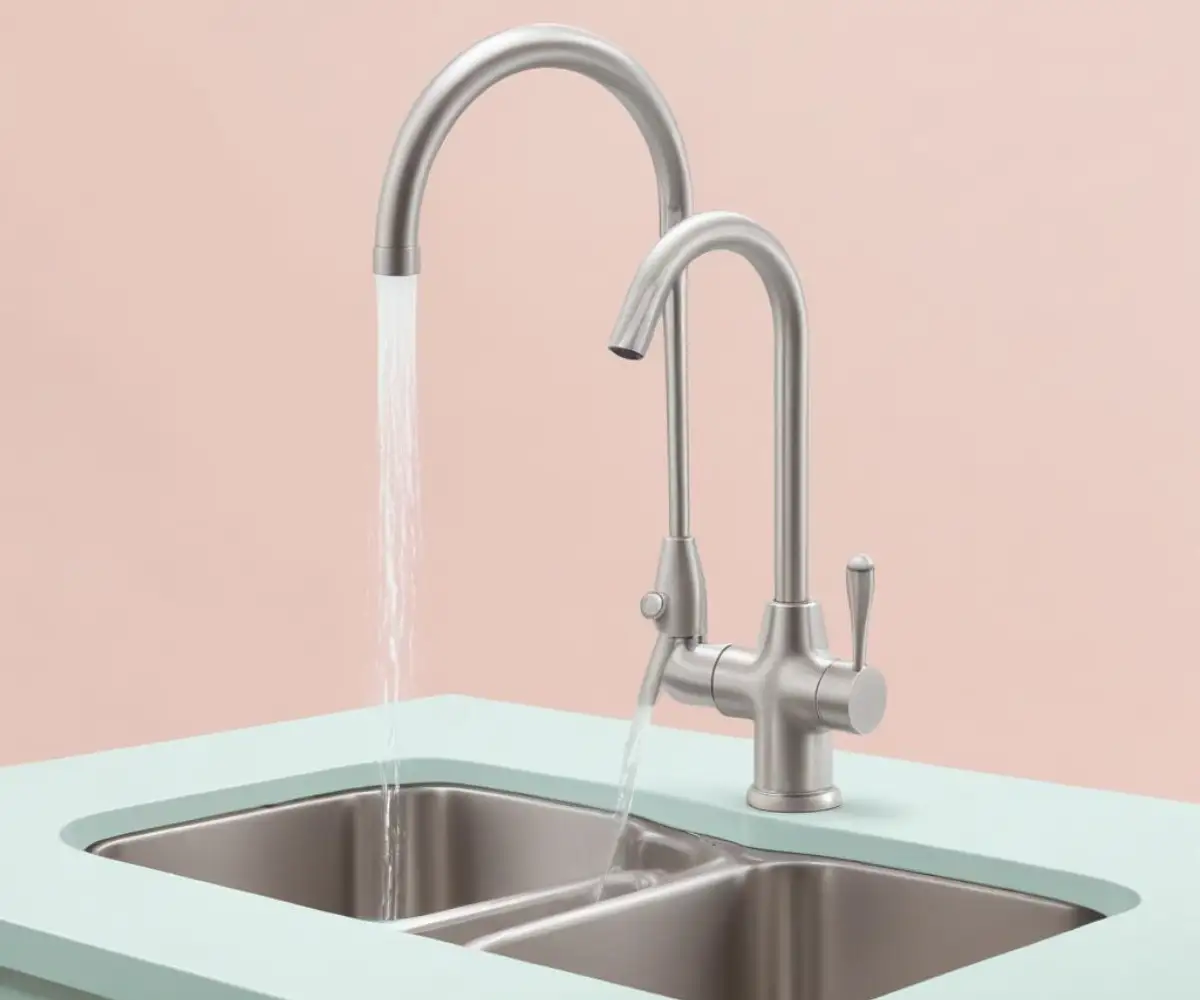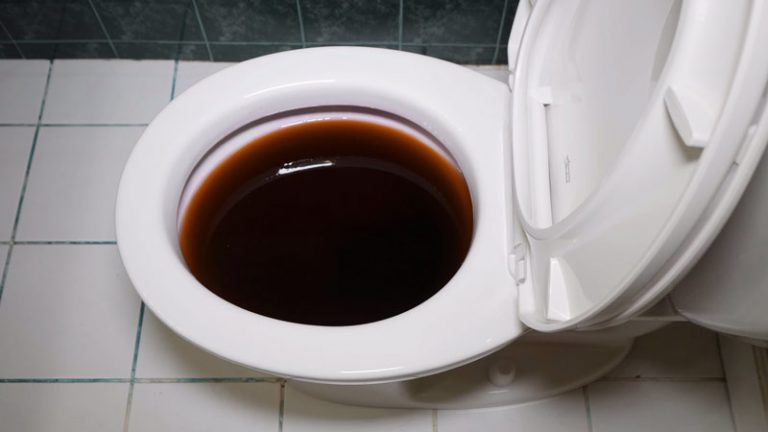Kohler Faucet Low Pressure? Restore Full Flow NOW With This Guide
There’s nothing more frustrating than a kitchen faucet that delivers a weak, sputtering stream of water. What should be a powerful jet for washing dishes or filling pots becomes a disappointing trickle. When this happens with a premium brand like Kohler, it can be particularly vexing. You’ve invested in quality, so you expect performance.
Fortunately, low water pressure in a Kohler kitchen faucet is a common problem with a number of straightforward solutions. Before you call a plumber, you can diagnose and fix most of the issues yourself with a few simple tools and a bit of patience. This guide will walk you through the process, from the easiest fixes to the more involved steps, to restore your faucet’s performance.
You'll Learn About
Why Is My Kohler Kitchen Faucet Losing Pressure? Common Culprits
Low water pressure in a kitchen faucet is almost always caused by a blockage somewhere in the water path. Over time, mineral deposits from hard water, sediment, and small debris can build up in various components of the faucet, restricting water flow. For pull-down or pull-out models, the complex hose and spray head system introduces more potential choke points.
The issue could stem from a simple clogged screen or something deeper within the faucet’s valve system. The key is to work methodically, starting with the most likely and easiest-to-access parts first. This approach saves time and prevents you from disassembling more of the faucet than necessary.

A Step-by-Step Guide to Fixing Your Kohler Faucet’s Low Pressure
Follow these troubleshooting steps in order. This logical progression starts with the simplest solutions and moves toward the more complex causes, ensuring you find the root of the problem efficiently.
Step 1: The First Suspect – A Clogged Aerator or Spray Head
The aerator is a small screen fitting at the very tip of your faucet spout. Its job is to introduce air into the water stream, creating a smooth, splash-free flow. Because it’s a fine mesh screen, it’s the most common place for sediment and mineral buildup to get trapped.
First, test if the spray head is the problem. Unscrew the entire spray head from the pull-down hose. Point the hose into the sink and turn on the water. If you get strong, consistent pressure from the hose, you’ve confirmed the blockage is inside the spray head itself. If the pressure from the hose is still weak, the problem lies further up the line, and you should skip to the next sections.
If the spray head is the culprit, soak it in a 50/50 solution of white vinegar and warm water for a few hours. This will help dissolve mineral deposits. After soaking, use an old toothbrush to gently scrub the screen and nozzles, then rinse it thoroughly before reinstalling. Many Kohler models have hidden or “cache” aerators that require a special key for removal, which should have been included with your faucet. If you’ve misplaced it, they are widely available at hardware stores.
Step 2: Inspecting the Supply Lines and Shut-Off Valves
Before diving deeper into the faucet’s internal parts, take a look under your sink. Ensure that the hot and cold water shut-off valves are fully open. Sometimes they can be accidentally knocked into a partially closed position, restricting flow.
Also, check the flexible supply hoses that connect from the valves to the faucet. Make sure they are not kinked or bent at a sharp angle, which can choke off the water supply. While less common, debris can also get stuck inside these supply lines, particularly after recent plumbing work in the house.
Step 3: Cleaning the Faucet Cartridge
If the aerator and supply lines are clear, the next likely cause is a clogged faucet cartridge. The cartridge is the internal valve that controls the flow and temperature of the water. Sediment can build up inside the small ports of the cartridge, leading to reduced pressure. Replacing a cartridge might seem intimidating, but it’s a manageable DIY task.
To access the cartridge, you will first need to turn off the water supply using the shut-off valves under the sink. Next, you’ll typically need to remove the faucet handle, which is often held in place by a small set screw. Once the handle is off, you can unscrew the cap and bonnet nut that holds the cartridge in place. Carefully pull the cartridge straight out. Rinse it under water and use a small brush to clean any visible debris from the inlet ports. Before reinstalling, it’s a good idea to briefly turn the water supply on for a few seconds to flush out any debris from the valve body itself. Then, reassemble the faucet in reverse order.
Step 4: The Hidden Checkpoints – Backflow Preventers and Diverters
Many modern pull-down faucets, including those from Kohler, have small, often overlooked components that can become clogged. At the connection point between the pull-down hose and the main faucet body, there is often a quick-connect fitting that contains a check valve or backflow preventer. This small part can have its own screen that catches debris.
To check this, disconnect the pull-down hose at the quick-connect fitting (you may need to squeeze tabs or remove a clip). Peer inside both ends of the connection and look for a small screen or plastic insert. These can often be gently pried out with a small screwdriver, cleaned, and reinserted. Some users report that these parts, which can look like small plastic baskets or colored inserts, are a major source of flow restriction over time. This is one of the less-discussed but highly effective solutions for restoring pressure.
Troubleshooting Your Kohler Faucet: A Quick Guide
Use this table to quickly diagnose your low-pressure problem based on the symptoms you’re experiencing.
| Symptom | Most Likely Cause | Solution | Difficulty Level |
|---|---|---|---|
| Weak flow from both hot and cold water. | Clogged aerator or spray head. | Unscrew the spray head, clean the screen, and soak in vinegar. | Easy |
| Low pressure only on hot OR cold side. | Debris in the corresponding supply line or shut-off valve issue. | Turn off water, disconnect the supply line, and flush it into a bucket. Check that the valve is fully open. | Medium |
| Pressure is weak even with the spray head removed. | Clogged faucet cartridge or debris in the hose connector. | Turn off water, remove and clean the faucet cartridge. Check the quick-connect fitting for debris. | Medium |
| Faucet flow is intermittent or sputtering. | Blockage in the diverter or cartridge. | Disassemble and clean the spray head diverter and faucet cartridge. | Advanced |
Advanced Troubleshooting: The Flow Restrictor
To comply with water conservation standards, all modern faucets include a flow restrictor. This is typically a small plastic disc with a hole in it, designed to limit the gallons per minute. While essential for efficiency, this part can sometimes become clogged with very fine sediment that gets past other screens.
In some Kohler models, the flow restrictor is integrated into the aerator assembly. In others, it might be located deeper, where the hose connects to the faucet body or within the cartridge itself. Removing a flow restrictor is generally not recommended as it can void your faucet’s warranty and lead to excessive water usage. However, cleaning it is a valid troubleshooting step if all else fails. Carefully locating and clearing debris from this component can be the final key to unlocking full pressure. If you’re weighing your options between different brands, you might find a comparison of Kraus vs Kohler helpful in understanding design differences.
When to Call a Professional Plumber
While most low-pressure issues with a Kohler faucet are fixable with basic tools, there are times when it’s best to call a professional. If you’ve worked through all the steps above and still have weak flow, there may be a more complex issue at play. This could include a faulty diverter valve deep inside the faucet body, a problem with your home’s overall water pressure, or clogged pipes further back in your plumbing system.
A professional plumber has the diagnostic tools to check your home’s water pressure and pinpoint the exact location of a blockage. They can also handle more complex repairs without risking damage to your faucet or plumbing. If you’re not comfortable disassembling the faucet cartridge or other internal parts, it’s always safer to rely on an expert.
Preventing Future Low-Pressure Problems
Once you’ve restored your faucet’s water pressure, you’ll want to keep it that way. The best prevention is regular, simple maintenance. Once every few months, unscrew the aerator or spray head and rinse it out. This will clear any minor sediment before it has a chance to build up and become a major clog.
If you live in an area with particularly hard water, periodic vinegar soaks will be your best defense against mineral buildup. For whole-home protection, consider installing a water softening system, which can prevent sediment and mineral deposit issues in all of your faucets and appliances. Keeping your plumbing in top shape ensures that you won’t be left wondering about other strange issues, like why your outdoor faucet might turn on by itself.

